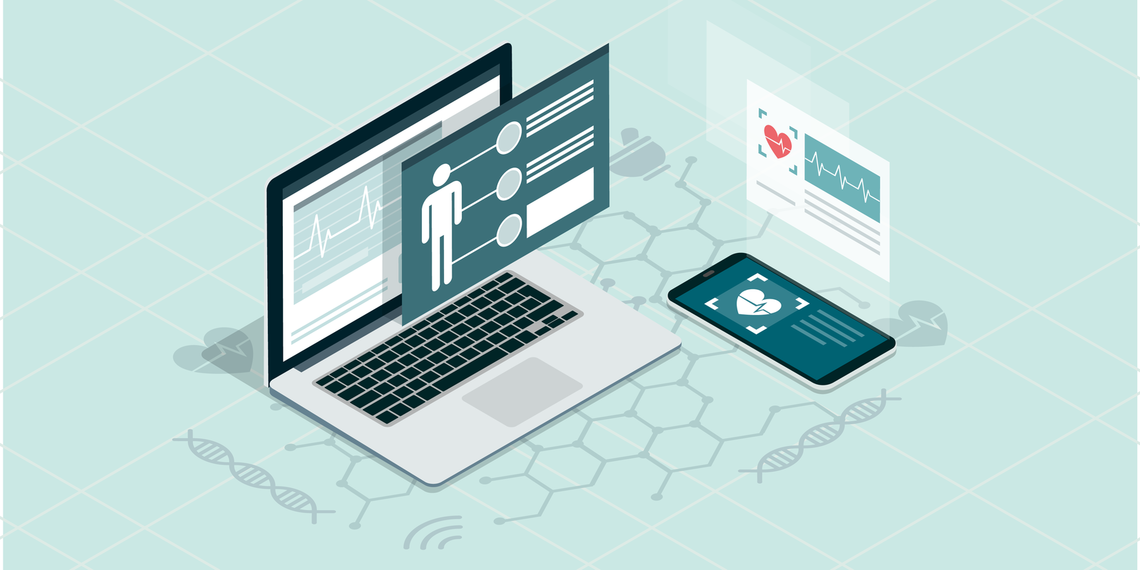ealth care delivery has changed dramatically over the last several years as facilities and providers incorporate digital technologies and innovations that improve care. It’s happening in many different aspects of health care—from the physical locations where we provide care to the tools that enable better care centered around the needs of the patient. These patient-centric models are shifting more care outside the four walls of a hospital, which presents several opportunities and challenges in the digital health care space.
We hear a lot about “disruption” in many different industries today as new technologies upend decades (or even centuries) of tradition and status quo. Health care is not immune from these disruptive forces, which is why University of Utah Health is looking ahead to anticipate the changes that will make care better for our patients and prepare for the future.
I like to think of it as a move from the “little d” of digital health to the “big D” of digital transformation. “Little d” digital health strategies include things like patient portals and telehealth visits. They are a piece of the puzzle, but certainly not the only piece. A “big D” digital transformation is designed to support the whole continuum of care for patients. We’ve been on this pathway for several years now, but Covid has accelerated it much faster than we ever anticipated.
Transformation requires new ways of operating and organizing
Perhaps one of the biggest shifts to keep up with the digital evolution is the IT operational and organizational transformation that must take place. How do we get where we want to be?
New ways of operating
Our current operating model is designed for simplicity, stability, and effectiveness. Those are not bad things. A forward-looking digital health model must be designed for innovation, flexibility, and agility—but not at the expense of stability or effectiveness. IT organizations must learn how to operate in both worlds, which can feel a little strange at times.
I sometimes think of it like a car that goes from zero to 100 mph, then back to zero—and doing that continually every day. We must have a stable IT environment, but we also have to be innovative and flexible. We need to be proactive and predictive, but agile enough to change quickly if something isn’t working. Reliability and agility are essential and cannot be mutually exclusive. It will be uncomfortable and challenging, but we will get better as our team learns to adapt and adjust to this dual operational environment.
New ways of organizing
Another significant shift is the mindset of delivering a health care product. It’s a concept that is difficult for some, because they don’t think of health care as a “product” in the same way they think of typical products, such as consumer goods or retail items. Health care is certainly more emotional and more personal than many of the products consumers purchase, but at its core, it is still a product, or something discrete that is paid for. Thinking of it in this way allows us to scope creation so we can rapidly develop, learn and improve what we offer our patients.
To advance our digital services, we organized into product teams that include:
- A product owner, who is not an IT person
- Operational users, such as patient experience or advisory committee members
- Stakeholders, including clinicians, operational team members, and a chief value officer
- Technicians, including an analyst, architect, and developer
These product teams run rapid development projects, similar to the most innovative tech firms in other industries. In the first few weeks they come up with a minimally viable product, then test it to determine whether it will be effective. Teams gather feedback from various product team members, then spend a couple weeks incorporating feedback and improving the product before opening it up for more testing.
The goal is to start small and tweak the product to find the right fit for whatever problem we are trying to solve.
Organizationally, it’s essential to involve enough stakeholders and team members to ensure an effective finished product, while keeping the teams small enough to adapt and innovate quickly.
Building the foundation for our digital future
The foundation of a successful digital transformation begins by aligning digital strategic goals with overall organizational transformation goals. Health care organizations cannot achieve digital success without a supportive institutional structure that moves everyone down a path of innovation.
Bridging the divide between a traditional, provider-centric health care delivery model and a next-generation patient-centric model requires a foundational infrastructure built for agile delivery of next-generation data tools, technologies, and talent. At U of U Health, we’re headed in the right direction.
Donna Roach
How are we building digital literacy? Chief Information Officer Donna Roach and Sr. Director of Patient Experience Mari Ransco share how using design thinking and seeing care through the eyes of our patients is a great place to start.
How do you design a digital strategy? Chief Information Officer Donna Roach explains that it all begins with listening to your customer. Here, she guides us step-by-step through designing Utah’s digital roadmap.
With careful communication and teamwork, technical supervisor Lindsey Garcia, family medicine physicians Susan Pohl and Bernadette Kirarly, and associate director of strategic projects Erin McCormack share how Madsen Family Practice made it easier for patients to schedule virtual appointments and access the primary care they need.
